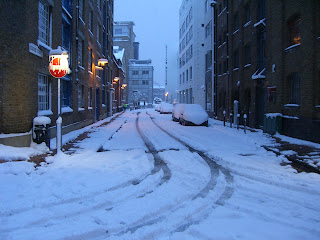There's no law stopping you from clearing snow and ice on the pavement outside your home or from public spaces. It's unlikely you'll be sued or held legally responsible for any injuries on the path if you have cleared it carefully. Follow the snow code when clearing snow and ice safely.
The snow code - tips on clearing snow and ice from pavements or public spaces
Prevent slips
Pay extra attention to clear snow and ice from steps and steep pathways - you might need to use more salt on these areas.Remember, people walking on snow and ice have responsibility to be careful themselves. Follow the advice below to make sure you clear the pathway safely and effectively.
Clear the snow or ice early in the day
It’s easier to move fresh, loose snow rather than hard snow that has packed together from people walking on it. So if possible, start removing the snow and ice in the morning. If you remove the top layer of snow in the morning, any sunshine during the day will help melt any ice beneath. You can then cover the path with salt before nightfall to stop it refreezing overnight.Use salt or sand - not water
If you use water to melt the snow, it may refreeze and turn to black ice. Black ice increases the risk of injuries as it is invisible and very slippery. You can prevent black ice by spreading some salt on the area you have cleared. You can use ordinary table or dishwasher salt - a tablespoon for each square metre you clear should work. Don’t use the salt found in salting bins - this will be needed to keep the roads clear.Be careful not to spread salt on plants or grass as it may cause them damage.
If you don’t have enough salt, you can also use sand or ash. These won’t stop the path icing over as well as salt, but will provide good grip under foot.

No comments:
Post a Comment